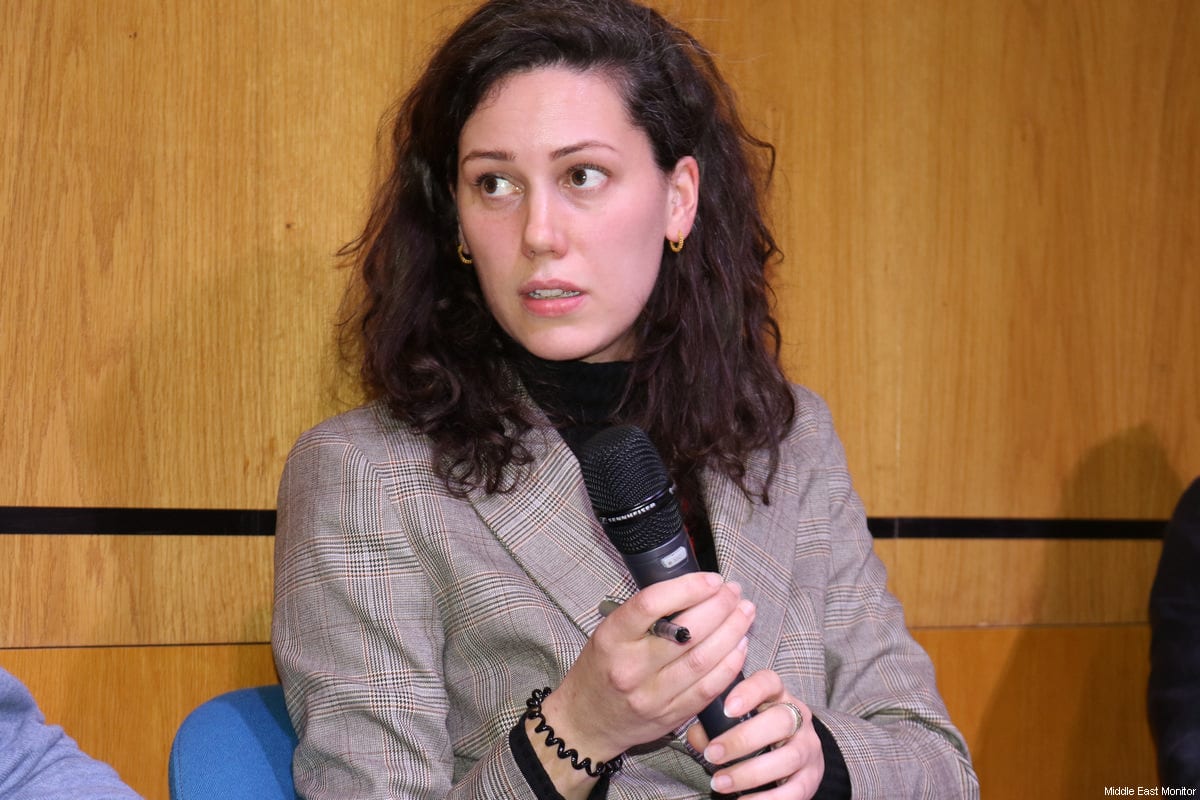Walls and checkpoints in occupied Palestine mean that artists from Gaza and the West Bank, though from the same country, may never actually meet each other; art, therefore, can offer a different form of engagement. “There is a lot of contact, certainly digital contact, through the arts organisations, who are very conscious about communication,” writer and editor Nicola Gray explains.
A new exhibition, currently showing at the Rich Mix in London, is an example of just this. Drawing together the work of sixteen Palestinian artists, from the West Bank, Gaza and the Diaspora, the show presents their work under one roof. “It is symbolic that Palestinian artwork is brought together elsewhere,” says Gray, who has co-curated the “Despite” exhibition with Aser El-Saqqa, the Director of Arts Canteen, a cultural venture which aims to build artistic relationships between the Arab world and Europe. The exhibition will run until the end of December.
Though the work is all contemporary painting, Gray describes the artists themselves as “cross-generational”. “It’s a kind of survey in a way; there are artists from the older, middle and younger generations.” This means that each artist brings their own experiences and interpretation of the conflict into their work. “Older generations experienced 1967, and generally more historically. Some are refugees who have been displaced in their earlier life,” she explains. “Older artists studied in Eastern Europe, because there were scholarships and opportunities to do that before 1989, whereas the younger ones, if they have been able to get out and study at all, have probably done so in Europe or the US.”
Regardless of which generation the artists comes from, the conflict is ever-present in their work. “Pretty much all the artists deal with the conflict in some way, even if it’s done very subtlety, because it’s their life. Yes, it almost does permeate every aspect of all of their artwork.”
While some of the artists in Gaza will focus on still life, she adds, it’s almost done as an exercise. “Even that, in my view, has a background to it. Even though there’s all that other stuff out there, I’m focussing on art here.”
Nevertheless, Nicola is keen to point out that despite it being omnipresent, fixed ideas about the conflict are challenged in the exhibition.
“There are so many preconceptions made about Palestine and Palestinians; everyone always talks about the conflict and about violence. It’s true that’s all there, and that has been a part of almost everyone’s experiences, but it doesn’t help anyone, and it certainly doesn’t help the Palestinians, to make out that it’s the only experience they have gone through.”
There are many ordinary, positive things taking place at the same time, she notes. “The occupation is ongoing, it affects everything, but no one can go through their daily life thinking about that all the time so there’s often a conscious effort not to let it affect everything because otherwise you wouldn’t function.”
For this reason, the exhibition and Arts Canteen strive to show the outside world that the artists don’t just work with bleak images of death and violence. As an example, Gray cites the example of Mohamed Abusal’s “Cactus” series, which uses the themes of light and the cactus.
“People in Gaza go for long periods without electricity so light is an issue in daily life. But it’s also a fact of the occupation that Israel controls the electricity sources and yet the artists choose to make it a positive thing. We celebrate light because it’s a precious thing that is limited.”
And the cactus? “The cactus is a symbol of life in the desert, of endurance and perseverance. A cactus can live on nothing.”
Like the majority of artists whose work is exhibited in Despite, Mohamed Abusal is from Gaza, a strip of land often referred to as the world’s largest open-air prison. Nicola explains that it is much harder for artists from the Strip to leave their country; to take-up work opportunities and residencies.” Yet the prospects for those from Gaza can be richer than for artists in the West Bank.
“Ironically, the artists in Gaza have perhaps had more opportunities to study than in the West Bank because Al-Aqsa University in Gaza has art study courses.”
In the West Bank, only An-Najah University in Nablus has an art course. The International Academy of Art in Ramallah is a relatively recent project, which opened in 2007, but it has a limited number of places.
Despite this, Palestinian artists do have opportunities outside their own country. They have had exhibitions in Dubai, the Gulf, Jordan and Europe, Gray explains. “They’re not completely cut off and isolated.” Their prospects are improving.
“Over the years I’ve been going there, I’ve seen many more opportunities than there were over the periods of the intifadas when the checkpoints were instigated and work started on building the Wall in the West Bank,” says Gray. “There wasn’t much activity then, for several years.”
Though the measures taken by Israel have “prevented internal movement” and face to face interaction between artists in Israel, Gaza and the West Bank, Gray says that “it has actually meant that there has been much more conscious effort to generate and find opportunities outside”.
Despite is showing at London’s Rich Mix gallery space until Friday 28th December 2012.
Follow Amelia on Twitter: @amyinthedesert
The views expressed in this article belong to the author and do not necessarily reflect the editorial policy of Middle East Monitor.








